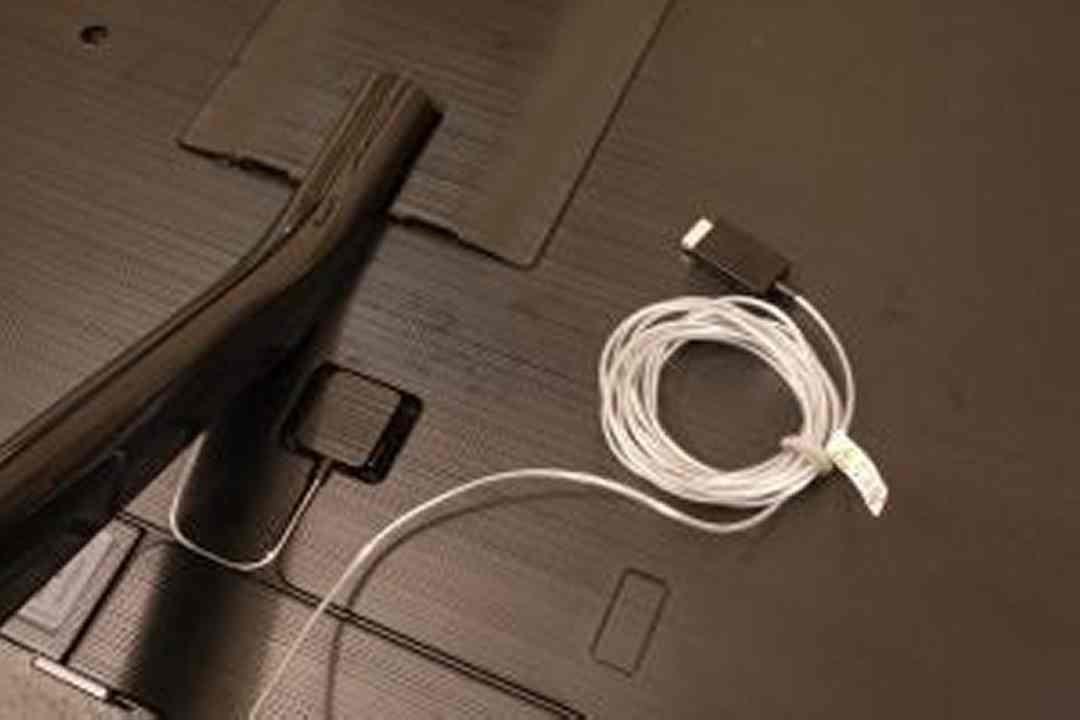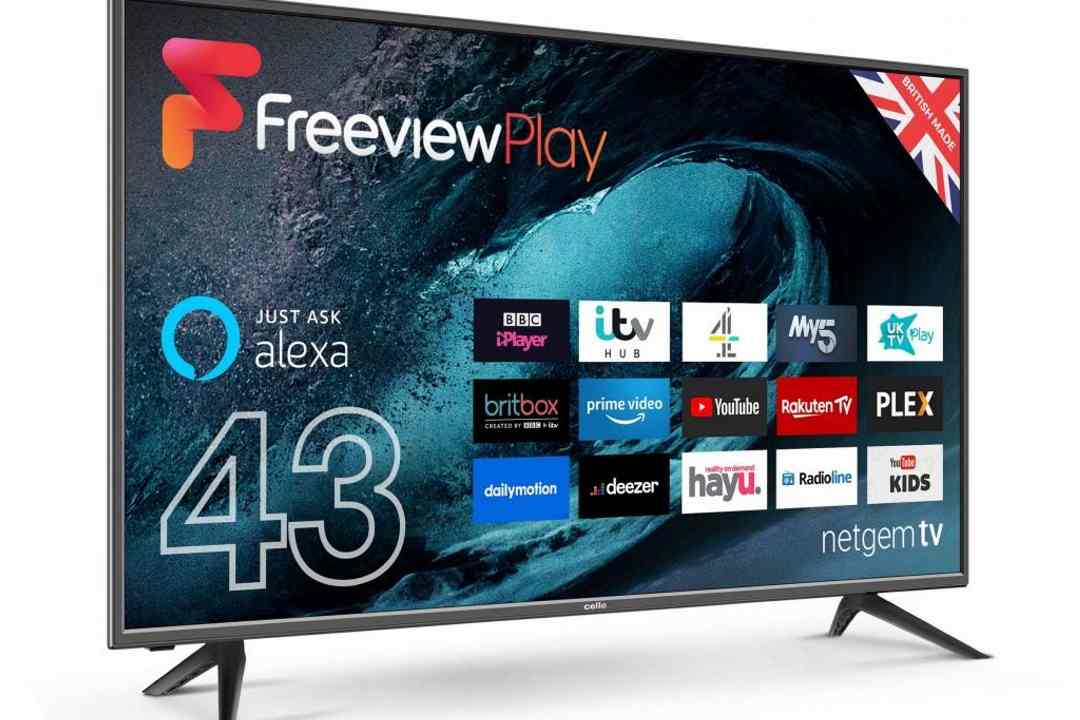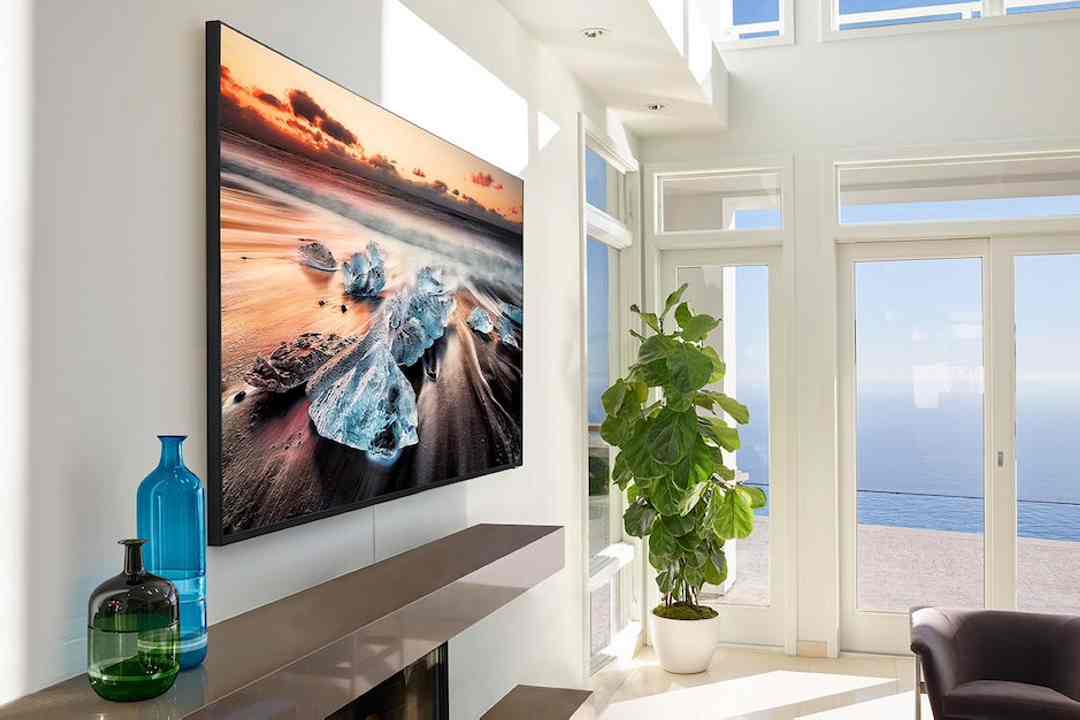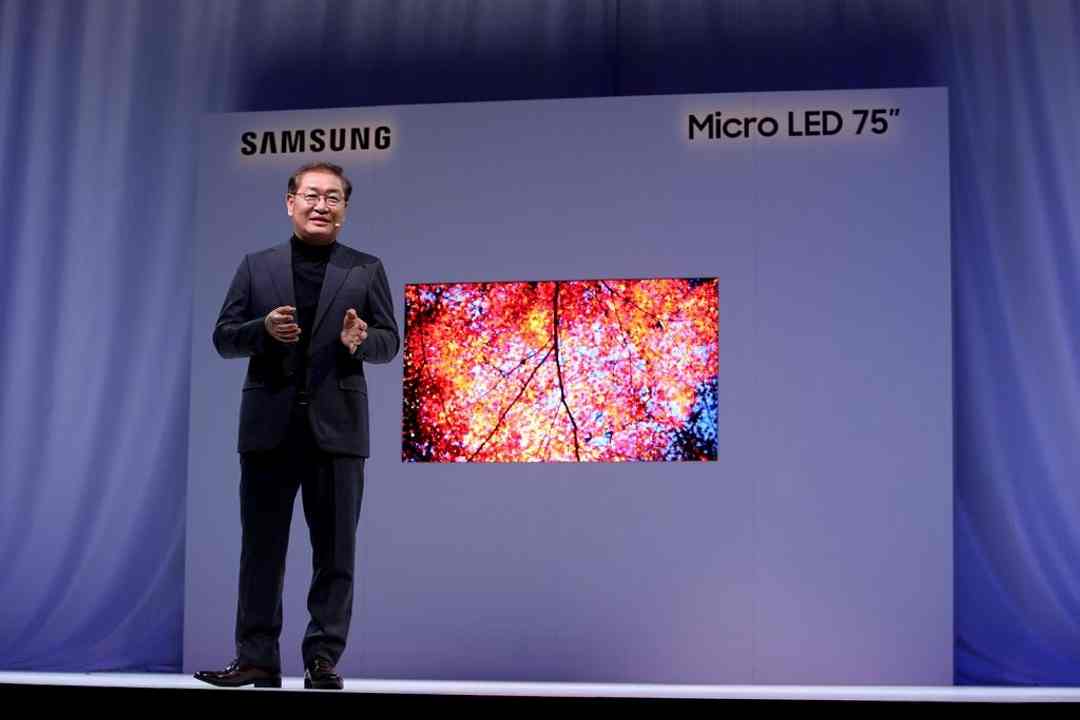
One of the most impressive TVs in recent memory.
Pros
- Gorgeous brightness and colours
- Impressively deep blacks
- Full-array local dimming
- Lovely finish
Cons
- Not quite OLED levels of shadow detail
Key Specifications
- Review Price: £3799
- HDR with HDR10, HLG and HDR10+
- 4K UHD resolution
- 2000 nits brightness
- 15.5ms latency in Game Mode
- Four HDMI
- Three USB
What is the Samsung Q9FN?
The Samsung Q9FN (full name QE65Q9FN) is the most impressive TV I’ve reviewed in years. It effectively combines the strong brightness and colour of QLED, or Quantum Dot LED, with the deep blacks and almost the lighting precision of OLED. That’s a huge deal in a world where you generally choose one or the other.
The Q9FN is a hugely versatile performer, one that really shows off what next-gen picture processes are all about. And the result is properly impactful high dynamic range to go with the 4K Ultra HD resolution, plus the freedom to view it with as few or as many lights on as you want.
This Samsung TV is definitive proof that there’s plenty of life left in the old LCD yet, and a worrisome roadblock on OLED’s apparent warpath.
What’s more, Samsung has priced it competitively, making the Q9FN somewhat of a temptation, at least compared to 2017 prices. The 65-inch 4K TV reviewed here costs £3799, which is over £1000 less than any flagship model last year. The 55-inch Samsung UE55Q9FN costs £3000. That’s right in the middle of OLED territory – the new LG C8 costs about the same.
On a personal note, this is a pleasant surprise. Less than two years ago, I’m sure I offended a Samsung representative by stating that OLED was the only way forward, and that LCD had peaked. I’m pleased to say I was very wrong.
Note: in the US, this model is known as the Samsung QN65Q9FN, while its smaller sibling is the Samsung QN55Q9FN.
Related: Best TVs
Samsung Q9FN – Design and features
The first thing you need to know about the Samsung Q9FN is that it’s a backlit model with full-array local dimming (FALD). Samsung tried going all edge-lit for 2017 and it backfired – for the 2000 nits’ brightness it boasts, you need FALD.
There are many benefits to a good backlit system, but it does add to the thickness of the TV. The TV is about 3cm at its thickest, tapering to about 2cm towards the edges. That’s some way from LG’s ‘wallpaper’ OLED TVs, but I don’t think it’s a big deal. Most TVs have deep stands and take up the same amount of space. I’d rather the picture performance was good than have a marginally thinner TV.
Since a waif-like TV isn’t an option, Samsung has decided to go premium with the body. There’s a lot of metal, but unlike previous designs, this one isn’t flashy. There are no shiny chrome accents or oddly shaped feet to be seen – the Samsung Q9FN has a matte gunmetal look, and the stand is a simple T-bar. The use of metal extends to the remote control, which is lovely.
Related: Samsung QLED TVs 2018: Every new Samsung 4K TV explained
Samsung has gone to great lengths to make the TV look less like a machine. It achieves this first by minimising cable clutter. The TV uses a single cable, which runs to a separate connections box. Samsung has used this ‘One Connect’ system before, but this is the first time a single cable handles both data and power.
More impressive is the fact that the cable is only 3.35mm thick. It isn’t quite invisible, but it’s difficult to spot and has the appearance of fishing wire. I’m told it’s a sort of optical hybrid – and like all optical cables, you’ll want to make sure you don’t bend or twist it. The bundled cable is 5m long, but you can buy a 15m one. Either way, you can set up your games console and Blu-ray player away from the TV, if you so wish.
The price of a thin (for an FALD) TV and a thin cable is that the One Connect box is no longer so compact. It’s wider than an Xbox One S and about half as deep. Or roughly the size of two stacks of four UHD Blu-rays, side by side. It was a slight shock to unbox the unit, but I’ve still found it easy enough to hide in my AV rack, in the same spot where I hid the last One Connect box. Sadly, it doesn’t house any more connections – it’s still four HDMI sockets and three USB ports, plus the usual Ethernet, aerial and figure-of-eight mains socket.
A fresh addition is the Ambient Mode, which first made its appearance on Samsung’s lifestyle-heavy The Frame TV. It seems the idea of using your TV as a big picture frame is catching on, so Samsung is offering it here. Think of it as a super-sized screensaver.
You can have artwork, headlines, a clock, rippling water or add your own photos. You can even take a picture of your wallpaper and have your TV in ‘see-through’ mode. And for those concerned about the power draw, Samsung says it’s just like the power-saving mode on your phone, which turns off other features to save battery. I’m told it will cost about $0.59 or £0.68 a month, based on three hours’ use a day. I find it unnecessary, but this is the sort of feature my mum has been wanting for years.
Mobile integration is another welcome addition. This saves you from having to enter your Wi-Fi password on your TV, which is tedious. Just download the Samsung Connect app onto your phone and you can set up the TV from there, including choosing your favourite apps. Once setup is complete, the app even serves as a second controller, in case you lose the physical remote. It works like a charm – Samsung kindly lent me a Samsung Galaxy S9 to try out the feature, but it also worked on an iPhone 6S.
As for picture specs? I’ve already mentioned the backlight and FALD system. Samsung wouldn’t give me an exact number of dimming zones, but it did say it’s around 500, similar to the Sony ZD9. Elsewhere, we’re looking at a few improvements over last year’s QLEDs. You get the standard 4K Ultra HD resolution and a 10-bit panel. Support for high dynamic range comes in HDR10 and Hybrid Log-Gamma.
Like other manufacturers, Samsung is dipping its toes into dynamic metadata, a flavour of HDR that optimises the picture scene by scene. The company has chosen the HDR10+ camp instead of Dolby Vision. There’s very little real-world difference right now because of a general lack of dynamic metadata content, but Samsung would call it futureproofing.
In a bid to ramp up black performance, Samsung has added layers of black and anti-reflection filter, designed to minimise internal light leakage and external glare. The panel also includes a layer made up of a prism-like structure, which aims to improve viewing angles and stop the picture washing out when viewed from side-on.
Related: Sony TVs 2018: What you need to know before you buy Bravia
Samsung Q9FN – Performance
Bravo, Samsung. Seriously, well done.
Usually in TV land you choose to prioritise light performance (LED LCDs) or low-light performance (OLEDs). Sure, there are LCDs that offer decent shadow detail, or OLEDs that offer great highlights, but there just hasn’t been a TV that excels in both extremes. Until now, that is.
What it means is that viewing conditions can be as dim or as bright as you want. If you want to close the curtains and turn off the lights for a proper cinematic experience, great. If your house looks more like a showroom and you’ve got a window facing the TV, no problem.
That this latest QLED does a great job with bright light and colour isn’t so much of a surprise – we said as much about last year’s Q9F, calling its bright performance ‘unprecedented’. That’s still very much the case here – you won’t find a brighter TV picture. Nor will you find as much colour volume: the saturation of colours as the picture gets lighter.
Do you need 2000 nits’ brightness? For films, no. I’ve spoken to Hollywood colourists and been told on numerous occasions that films are generally mastered with 1000 nits in mind, often less, to avoid eye strain. But this isn’t the case for sports, where a football field is bathed in spotlights. If you want an intense, colourful picture for the World Cup 2018, this is it.
As for black performance? Let’s get this out of the way first: it doesn’t beat OLED. You just can’t replicate the lighting precision of OLED (an emissive medium) with backlighting (transmissive). That said, Samsung has come darned close, to the point where I couldn’t tell the difference from across the room. It was only when I got within two metres of the screen that I could tell the Samsung Q9FN is an LCD.
Firstly, the depth of the blacks is simply stunning. We’re talking proper blacks, not the kinda-black-actually-grey that you get with the majority of LCDs. The bars that appear on the top and bottom of widescreen movies? They’re jet black.
You’ll spot the rare bit of blooming if you really go looking for it, but most of the time the highlights are wonderfully localised. Samsung is using a new dimming algorithm that targets bright areas and dims their edges – and it works wonders.
General lighting uniformity is great, too, although I’d expect as much from an FALD model. No ugly patches of unwanted light, nor ‘dirty screen effect’ to be seen anywhere.
Related: LG TVs 2018: every OLED and LED LCD model explained
The only niggle is that, on occasion, I found the dimming a little too effective, leaving slightly intense black areas where there might be some detail. This is easily remedied by bumping up brightness to 1 or 2, while keeping Local Dimming on High (for HDR) and Standard (for SDR). Oh and Movie mode is best. And turn off the Eco mode power-saving stuff, as that only serves to dampen the fun.
Viewing angles have been improved, too. Previously, I’d be afraid to move out of about 20 degrees from centre, or risk a drop in colour and brightness. The Samsung Q9FN doesn’t have OLED-levels of viewing flexibility, but you can safely move around up to 40 degrees from centre.
I’ve left motion last because it’s the least remarkable element here. It’s neither amazing nor terrible. It does well enough that there’s not much in the way of artefacts with all the processing turned off, but I’d recommend manually setting Blur Reduction to seven or eight, and Judder Reduction to two or three. Sony is ahead in this department – I’ve seen better motion handling on last year’s Sony A1 OLED and this year’s Sony XF90.
It’s good news for gamers, too. Samsung has tweaked its Game Mode to reduce latency. Last year’s lag hovered around 20ms, which is already excellent, but now the Q9FN can handle 1080p at 60Hz with about 15.5ms. If you get destroyed in a game, it probably won’t be down to the TV. Oh, and there’s support for VRR (Variable Refresh Rate) for PC gamers.
As for audio performance, I’m pleased to say this TV is more than good enough to be viewed in isolation, without the need for a soundbar or extra speakers. Of course, they’ll help with big movie soundtracks, but I was in no rush to fetch the sonic reinforcements. There’s enough weight to do justice to voices and small explosions, and the treble is never harsh. There’s even a decent stab at effects steering. A neat addition is the Auto Volume Mode, which equalises sound levels to avoid sudden spikes – handy for night-time viewing.
Related: Panasonic’s 2018 4K HDR and HD TV lineup explained
Why buy the Samsung Q9FN?
TVs are full of compromises. That’s the rule. This is why I spend much of my time guiding folk on whether they should buy LCD, or OLED – it generally depends on whether you value light or dark performance.
The Samsung Q9FN offers about as little in the way of compromise as I’ve ever seen on a TV. This is a rare beast that seems as comfortable in pitch black as it is with the lights blazing. Its light and colour performance is, as it was last year, unprecedented. And while its black performance doesn’t quite offer OLED levels of detail and control, it’s more than good enough.
Want a TV to show off what high dynamic range is all about? This is it.
If you’re the patient type, you may want to wait a little. The Sony ZF9 LCD TV has just been announced. The last time Sony unveiled a TV this late into the year, it managed to beat the Samsung flagship at the time. This will be an interesting fight and you can read more about the new models here: Sony’s new Master Series 4K TVs could be the ultimate way to watch Netflix.
Related: Best 4K TV Deals: Bargain TVs in every size
Verdict
One of the most impressive TVs in recent memory.
How we test televisions
We test every TV we review thoroughly over an extended period of time. We use industry standard tests to compare features properly. We’ll always tell you what we find. We never, ever, accept money to review a product.
Find out more about how we test in our ethics policy.
Used as the main TV for the review period
Tested for more than a week
Tested using industry calibrated tools, discs and with real world use
Tested with broadcast content (HD/SD), video streams and demo discs







